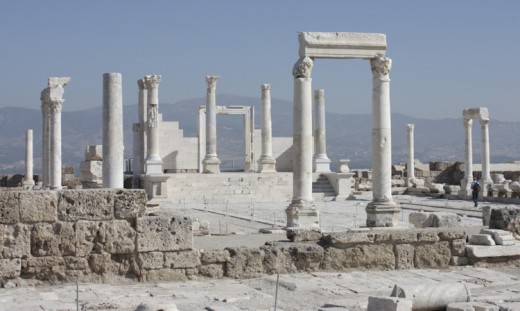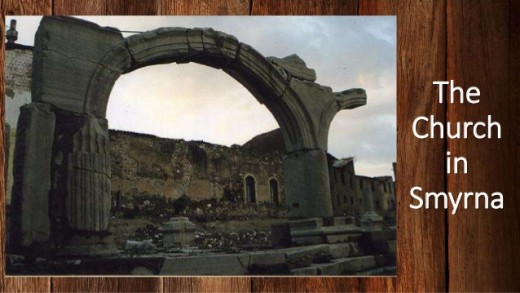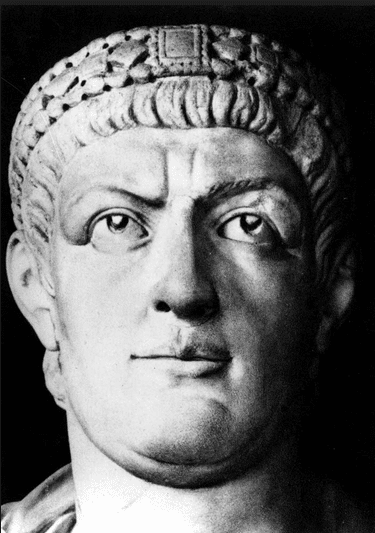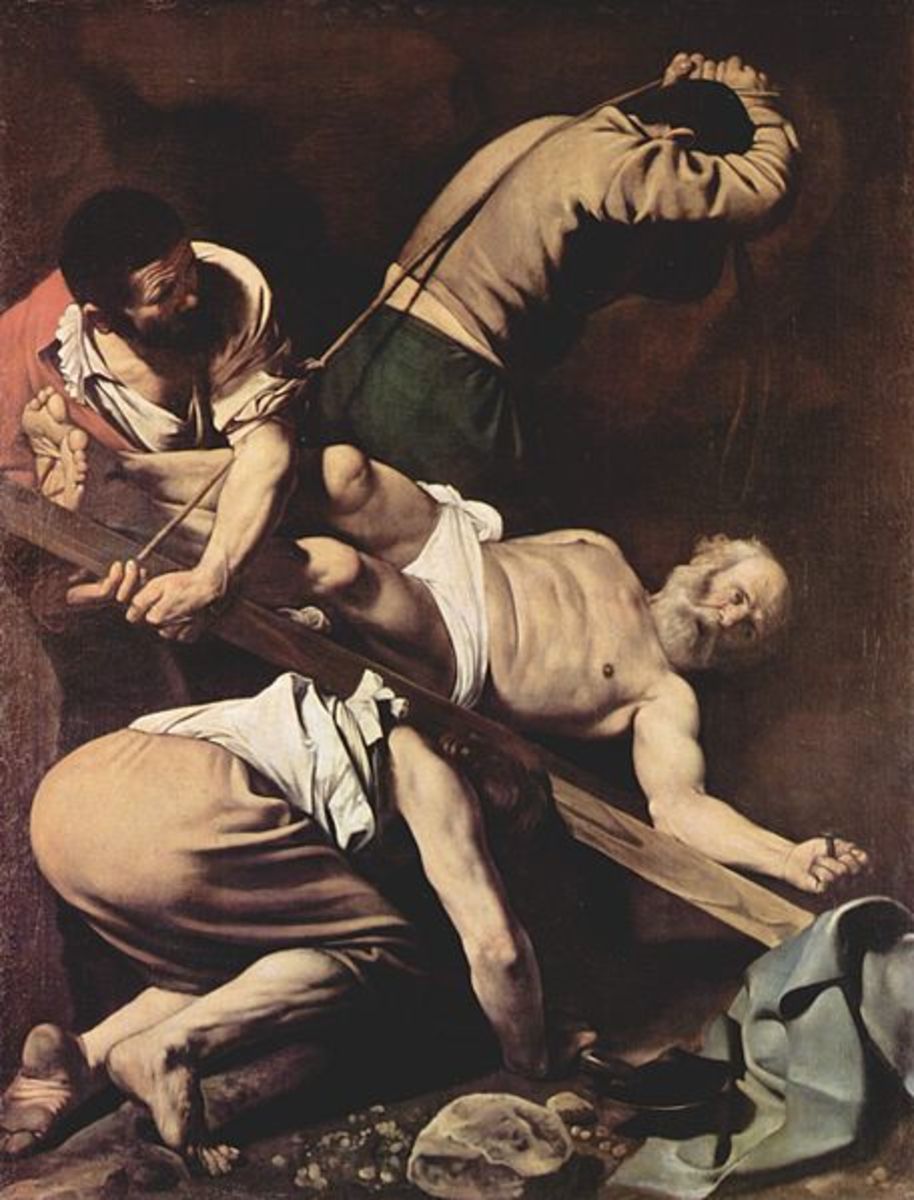Laodicea - The 21st Century American Church - Part 2

Link to Part 1
- Laodicea - The 21st Century American Church - Part 1
History repeats itself as the message to Laodicea comes to the 21st century American Church.

The Church at Smyrna
Enter – The church at Smyrna. The Lord had nothing but commendation for this church. They lived out their faith on a daily basis, but we need to see that the church of Smyrna was a much-persecuted church. What would it take to have you turn your back on Jesus? I’m afraid in many cases it would take very little. The backbone of the American church is weak. We want the glitter and the gold. We want to feel good. We want our ears tickled.
The fuzzy, feely church of today is not representative of the church at Smyrna. The church endured persecution and poverty, probably far beyond what you and I can imagine. Not only was the church at Smyrna persecuted, but it also represented the time period between100 A.D. – 313 A.D. Much persecution was brought to the church at large during this time. The prophecy of that time period was seen as a type through the Smyrna church.
Let me mention a couple of thoughts about persecution. We read in James 1:2-4, “My brethren, count it all joy when ye fall into divers temptations; Knowing this, that the trying of your faith worketh patience. But let patience have her perfect work, that ye may be perfect and entire, wanting nothing.“
The temptations spoken of in verse 2 do not refer to temptations to commit sin, but rather it refers to adversity; to hardships in life; to persecution. James is saying that through these severe trials of life we are made perfect, that is, complete. One of the blessings of persecution is Christian maturity – the blessing of strength.
Persecution brings purity. The church that has been purged is a pure church. They have come to rely on the Lord Jesus in a way we know not of in America. The persecuted church is both mature, complete, and pure. Although the flesh says, “I do not want to face hard trials and testing,” I believe what America needs is a strong dose of persecution. Will the real Christian please stand up?
Poverty also was a part of the life of the Christians at Smyrna, yet these followers of Christ drew their line in the sand. They would trust the risen Lord even if it meant death – and it did.
Where do you stand, fellow servant? Is it not fitting that the resurrected Savior would present Himself to this church by saying, " . . . These things saith the first and the last, which was dead, and is alive;” Many of the members of the body at Smyrna were dead, were martyred. Oh, but they were alive in Christ. They had the blessing of Heaven. Their earthly death gave them real life, never to suffer again. Their rewards were great as well. So I ask you again. Where do you stand, fellow servant?
The Church at Pergamos
Next, Jesus visits the church at Pergamos, or Pergamum. Pergamum held the distinction of being the capital of the Roman province of Asia Minor.
Our Lord commends His Bride to be at Pergamos in Revelation 2:13 – “I know thy works, and where thou dwellest, even where Satan's seat is: and thou holdest fast my name, and hast not denied my faith, even in those days wherein Antipas was my faithful martyr, who was slain among you, where Satan dwelleth.” He immediately goes on to tell them their faults in verses 14-16.
The city was home to a variety of pagan cults. It was the first city in Asia Minor to officially recognize Caesar worship by building a temple to Caesar. Some have the opinion that this city was more idolatrous than all of Asia Minor combined.
The church was largely made up of Gentiles who were once pagan. They became very worldly in their approach to worship. It was during the time period of 313-500 A.D. that the description of this literal church can be seen.

The Church at Thyatira
It was during this time that Emperor Constantine brought the church and the world together. Heathen priests became “Christian” priests. The heathen temples became “Christian” churches. Heathen feast days were kept and pulled into “Christianity” like Christmas and Easter – forms of Ishtar worship. “Christianity” became the state religion.
Christianity grew in name, but not in purity. The church grew in numbers, but not in maturity. The church at Pergamum was divided, but not complete.
Next, Jesus addresses the church at Thyatira. The city of Thyatira could be found seated on the Lycus River, a tributary of the Maeander, located in Phrygia. Its location was roughly 40 miles east of Pergamos. Largely, this was a city of trade.
Thyatira was known for its production of wool and purple cloth. We see in Acts 16:14 that a woman by the name f Lydia sold some of this purple cloth in Thyatira. Thyatira also was the home of many trade guilds which paid allegiance to the patron gods, Tyrimnos and Caesar. These were considered the sons of Zeus – the god of gods. It is no wonder that this letter from Jesus Himself begins by saying, “And unto the angel of the church in Thyatira write; These things saith the Son of God . . . “ This was the Son of the living and true God who was speaking His heart. This is the only letter of the seven that uses the term “Son of God”. Perhaps Jesus chooses this term for this church to point to the false worship of the city.
Among the church’s strong points, Christ mentions their works, charity, service, faith, and patience. But what about the evil lurking inside the church? One word describes the problem with the church at Thyatira – Jezebel.
Some see the use of the word Jezebel, as symbolic. It is possible that she was a real person leading the church into idolatry. Whether she is symbolic or not, the point is, the church had fallen into spiritual adultery as well as physical adultery. The guilds were known for their worship of fertility and had a negative effect on Christian growth during this time period. In the matter of the secondary prophecy, this time period took place between 500 A.D. to the early 1300s AD.
The Church at Sardis
Moving on to church number five, the risen Lord addresses the church at Sardis. Matthew Henry credits the Apostle John with establishing this church. If that was the case, it must have pained the Apostle greatly to hear Jesus’ condemnation of the church.
In Revelation 3:2, the Saviour speaks the words, “Be watchful, and strengthen the things which remain, that are ready to die: for I have not found thy works perfect before God.” This was the church of the living dead. G. R. Beasley-Murray says this of the church at Sardis – “The appearance [of the Sardis church] is that of a beautifully adorned corpse in a funeral parlour, and the Lord is not deceived.” (Revelation, p. 95). G.B. Caird calls Sardis “the perfect model of inoffensive Christianity” (A Commentary on the Revelation of St. John the Divine, p. 48).
Christ comes to this church with this statement, “These things saith he that hath the seven Spirits of God . . . .” This church was in great need of revival. It needed to fall in worship before the Seven Spirits of God (Revelation 3:1) who was the Lord Himself. The church had lost the pure testimony it was meant to have and traded it in for an empty shell. Death was at the door of the church.
Paul Kroll says this about the church at Sardis, “The church needed to stir up the living Spirit of God in order to salvage what was left. What was dead about the church and what needed reviving? First, there was no indication of persecution or trouble from outside forces. Neither was there any heresy within, in contrast to some of the other churches. Things seemed to be peaceful and religiously correct. Perhaps it was a church that was too good to be true. Its religiously proper appearance may have only meant that it had fully and silently compromised with the truth and the pagan society around it.” (Sardis: The "Dead" Church) The closing of the church door was not far off.
We will continue with Part 3 shortly.
- Laodicea - The 21st Century American Church - Part 3
The Laodicean Church - The church that makes God sick.
© 2017 William Kovacic








